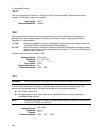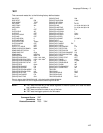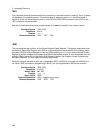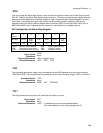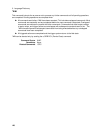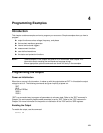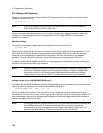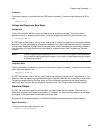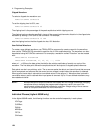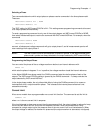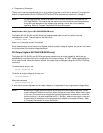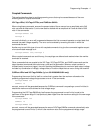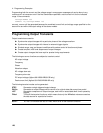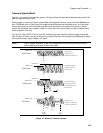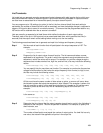
4 - Programming Examples
124
Clipped Waveform
To select a clipped sine waveform use:
FUNCtion:SHAPe CSINusoid
To set the clipping level to 50%, use:
FUNCtion:SHAPe:CSINusoid 50
The clipping level is the percentage of the peak amplitude at which clipping occurs.
The clipping level can also be specified in terms of the percent total harmonic distortion in the clipped sine
waveform by adding a THD suffix to the command. For example,
FUNCtion:SHAPe:CSINusoid 10 THD
sets the clipping level so that the clipped sine has 10% distortion.
User-Defined Waveform
To create a user-defined waveform, use TRACe:DEFine command to create a name for the waveform,
then use the TRACe[:DATA] command to send the list of 1024 amplitude points. The waveform can then
be selected using the FUNCtion command. For example, a waveform named "Distortion" can be created
with:
TRACe:DEFine DISTORTION
TRACe:DATA DISTORTION, n1, n2, n3, ..., n1024
where n1 ... n1024 are the data points that define the relative amplitudes of exactly one cycle of the
waveform. The first data point defines the amplitude that will be output at 0 degrees phase reference.
Data points can be in any arbitrary units. The ac source scales the data to an internal format that removes
the dc component and ensures that the correct ac rms voltage is output when the waveform is selected.
When queried, trace data is returned as normalized values in the range of 1. Waveform data is stored in
nonvolatile memory and is retained when input power is removed. Up to 12 user defined waveforms may
be created and stored.
NOTE: Because waveform shape commands are coupled with the voltage commands, changing
waveforms without changing the programmed voltage may result in an error if the
resulting peak voltage amplitude exceeds the maximum voltage rating of the ac source.
Refer to "Coupled Commands" for more information.
Individual Phases (Agilent 6834B only)
In the Agilent 6834B model, the following functions can be controlled separately in each phase:
VOLTage
CURRent
PHASe
MEASure
FETCh
CALibrate



